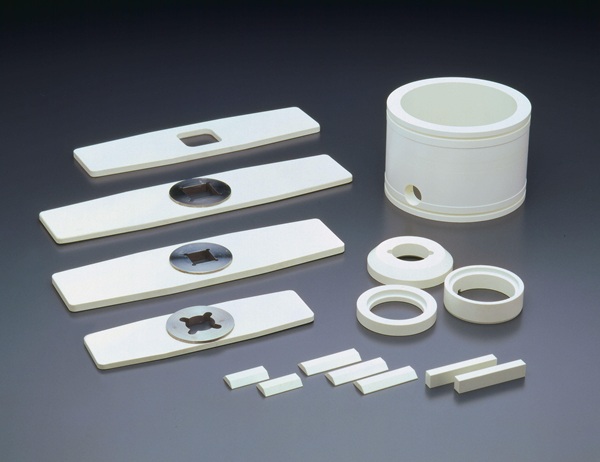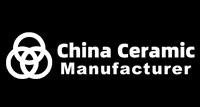Key Aerospace Applications of Zirconia Toughened Alumina (ZTA) Ceramics
Modern aerospace engineering demands materials that can perform reliably under some of the harshest conditions imaginable—extreme temperatures, intense mechanical loads, rapid thermal cycling, and corrosive atmospheres. Traditional materials such as metals and monolithic ceramics often fall short when it comes to combining strength, toughness, and thermal resilience. Zirconia Toughened Alumina (ZTA) ceramics provide a compelling alternative. By integrating toughening mechanisms from zirconia with the structural strength of alumina, ZTA exhibits a rare combination of hardness, fracture resistance, and thermal stability. These attributes make ZTA increasingly important across the aerospace sector, where failure is not an option. From turbine components and engine linings to sensor housings and spacecraft structures, this article explores how ZTA is reshaping the future of flight and space exploration.
At China Ceramic Manufacturer, we specialize in high-quality zirconia toughened alumina, ensuring optimal performance for industrial and scientific applications.

What Is Zirconia Toughened Alumina (ZTA) and How Is It Made?
ZTA is a composite ceramic material formed by dispersing zirconia particles within an alumina matrix. The addition of zirconia improves fracture toughness through a stress-induced phase transformation that hinders crack propagation. Typical manufacturing techniques include dry pressing, hot pressing, and isostatic pressing followed by sintering.
Key Physical and Mechanical Properties of ZTA:
| Property | Typical Value |
| Density (g/cm³) | 3.8–4.2 |
| Hardness (Hv) | 1600–1800 |
| Flexural Strength (MPa) | 600–800 |
| Fracture Toughness (MPa·m¹⁄²) | 6–8 |
| Thermal Conductivity (W/m·K) | 8–10 |
| Coefficient of Thermal Expansion (x10⁻⁶/K) | 9–10 |
Common ZTA Manufacturing Methods:
- Dry pressing and sintering
- Isostatic pressing
- Hot pressing
- Ceramic injection molding
Explore our high-quality zirconia toughened alumina.
How Is ZTA Ceramic Used in Jet Engines and Turbines?
ZTA components are employed in high-temperature zones such as turbine shrouds, combustion chamber liners, and nozzle guides. These parts benefit from ZTA’s excellent thermal shock resistance and durability under cyclic loads, outperforming traditional metals.
Jet Engine Applications of ZTA:
- Combustion chamber liners
- Turbine blade shielding
- Thermal barrier coatings
- Nozzle and housing linings
What Role Does ZTA Play in Thermal Protection Systems (TPS)?
Spacecraft TPS demands materials that withstand extreme re-entry temperatures and rapid heating. ZTA ceramics are used in insulating tiles, outer layer shells, and heat shields due to their structural stability and resistance to spalling under thermal stress.
Advantages of ZTA in Thermal Protection Systems
- High Thermal Shock Resistance: Maintains structural integrity under rapid temperature changes.
- Low Thermal Conductivity: Reduces heat transfer to internal components.
- Resistance to Spalling and Cracking: Prevents surface damage under repeated stress.
- Dimensional Stability: Retains shape and strength even at elevated temperatures.
- Compatibility with Coatings: Allows for additional surface treatments or reflective layers.
How Is ZTA Used in Aerospace Sensor Protection and Insulation?
ZTA’s electrical insulation properties, chemical inertness, and thermal stability make it ideal for aerospace electronics. It is often used in sensor housings, radar domes, and electrical insulation mounts in high-performance aircraft.
Sensor Protection Applications:
- High-temperature sensor housings
- Radar dome outer shells
- Electronic insulation mounts
- Thermal isolation casings
How Does ZTA Improve Reliability in Satellite and Spacecraft Structures?
In satellite and spacecraft structures, ZTA ceramics are used for structural supports, fasteners, and casings. Their resistance to microcracking and high thermal stability ensures longevity under space conditions.
Benefits of ZTA in Satellite and Spacecraft Applications:
- Microcrack Resistance: Withstands mechanical vibrations and launch stresses without structural failure.
- High Thermal Stability: Performs reliably through repeated orbital day-night cycles and solar radiation exposure.
- Low Outgassing: Minimizes contamination in vacuum environments.
- Dimensional Precision: Maintains tight tolerances over time and temperature shifts.
- Long Operational Lifespan: Suitable for long-duration missions with minimal material degradation.
Why Is ZTA Preferred Over Traditional and Advanced Ceramics in Aerospace?
In the aerospace industry, materials must withstand a combination of mechanical stress, thermal shock, and rapid temperature fluctuations. While traditional ceramics like alumina provide excellent hardness and insulation, and advanced ceramics like silicon nitride and aluminum nitride excel in thermal performance, Zirconia Toughened Alumina (ZTA) uniquely combines high mechanical strength, fracture toughness, and good thermal stability. This balance makes ZTA more adaptable to demanding aerospace conditions, particularly where both structural integrity and thermal performance are critical.
Comparative Properties of Advanced Ceramics for Aerospace Applications:
| Material | Flexural Strength (MPa) | Fracture Toughness (MPa·m¹⁄²) | Hardness (Hv) | Thermal Conductivity (W/m·K) | CTE (x10⁻⁶/K) | Max Operating Temp (°C) | Electrical Resistivity (Ω·cm) | Relative Cost | Key Aerospace Applications |
| ZTA | 600–800 | 6–8 | 1600 | 8–10 | 9.5 | ~1650 | ~10¹⁴ | Moderate | Turbine liners, sensor housings |
| Si₃N₄ | 900–1000 | 7–10 | 1500 | 25–30 | 3.2 | ~1400 | 10⁸–10¹⁰ | High | Bearings, nozzles, hot-stage parts |
| Alumina | 300–400 | 3–4 | 1800 | 25–30 | 8 | ~1500 | >10¹⁴ | Low | Electrical insulators, substrates |
| YSZ (Zirconia) | 900–1200 | 6–10 | 1200 | 2–3 | 10.5 | ~1200 | 10¹⁰–10¹² | High | Thermal seals, actuator components |
| AlN | 300–400 | 2–4 | 1200 | 140–180 | 4.5 | ~1200 | >10¹⁴ | Moderate | Heat sinks, radar modules |
ZTA offers a strong balance of mechanical and thermal properties at a moderate cost compared to other advanced ceramics. This makes it especially suitable for aerospace components that require durability under thermal stress without the highest cost of premium materials like silicon nitride or YSZ.
Request a custom quote for high-quality zirconia toughened alumina.
What Is the Future of ZTA in Aerospace Applications?
Future developments include the integration of ZTA with additive manufacturing, enabling complex designs and rapid prototyping. Multifunctional composites and AI-based simulations are also enhancing material performance and design efficiency.
Future Trends in ZTA Ceramics:
- Ceramic-metal hybrid components
- AI-optimized microstructures
- Miniaturized ZTA parts for microsatellites
- 3D printed ZTA for structural applications
FAQ
| Question | Answer |
| Can ZTA be used in engine core parts? | Yes, especially in non-moving high-heat zones. |
| Is ZTA corrosion-resistant? | It resists chemical attack in harsh environments. |
| How is ZTA machined? | Usually with diamond tools, under controlled parameters. |
| Can ZTA be 3D printed? | Emerging technologies allow limited additive manufacturing. |
| Which is lighter, ZTA or composites? | Composites are lighter, but ZTA offers better wear and heat resistance. |
Conclusion
Zirconia Toughened Alumina (ZTA) ceramics represent a new class of engineered materials that meet the extreme demands of modern aerospace systems. By combining high hardness, fracture toughness, thermal shock resistance, and chemical stability, ZTA fills a critical gap left by conventional metals and monolithic ceramics. Its applications continue to expand—from jet engine linings and thermal barrier coatings to satellite housings and sensor mounts—proving its value across every phase of aerospace operations.
As the aerospace industry moves toward more demanding missions, longer lifespans, and lightweight design requirements, ZTA’s performance advantages become even more vital. Ongoing research into additive manufacturing, hybrid ceramic-metal designs, and AI-guided material optimization will only deepen its impact. At China Ceramic Manufacturer, we closely follow innovations in ZTA and other high-performance ceramics to support the next generation of aerospace materials. ZTA isn’t just a better ceramic—it’s a foundation for the future of flight and space technology.
Looking for high-quality zirconia toughened alumina? Contact us today!
